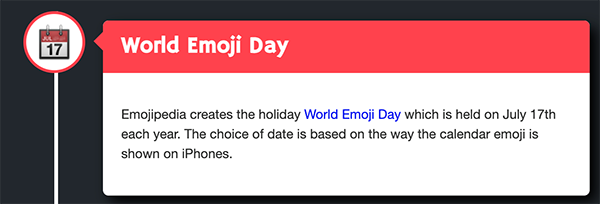I <3 Math, and Math Is Fun :-)
Do you recognize any of these? The first (known-to-me) emojis! Yup, quite primitive, and predating the smartphone versions of the fancy emojis we know and love today. But, I do remember emails that sent images in the signature, some basic, some complex and some from people who had way too much time on their hands using ASCII art.



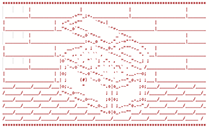
As an early user of the TI-80 … something (TI-81, TI-83 and TI-84 graphing calculators), I can remember classmates and — once I started teaching — students using the draw command on the pixelized screen to create scenes like these:
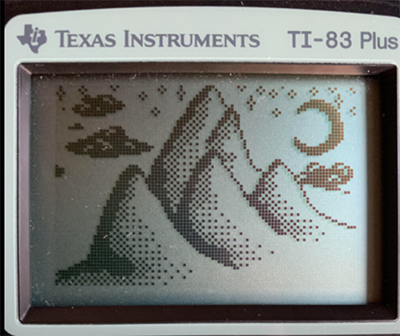
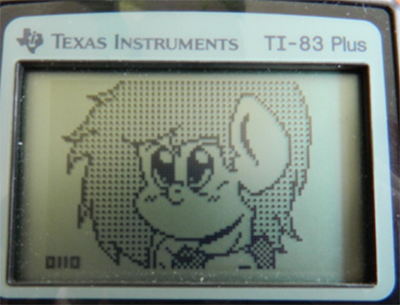
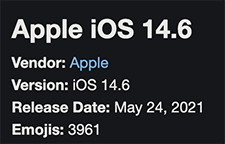 With the advancement of technology, the advancement of emojis came along quickly. In doing a quick search on the internet, there is a site called emojipedia.org — yes, an entire site dedicated to emojis. I looked to see how many preloaded emojis are on my current phone, and it said almost 4,000 emojis! Wait … what? Just think: You can use a new one every day for just under 11 years. And by the time you finish using all 4,000, who knows how many more new ones there will be!
With the advancement of technology, the advancement of emojis came along quickly. In doing a quick search on the internet, there is a site called emojipedia.org — yes, an entire site dedicated to emojis. I looked to see how many preloaded emojis are on my current phone, and it said almost 4,000 emojis! Wait … what? Just think: You can use a new one every day for just under 11 years. And by the time you finish using all 4,000, who knows how many more new ones there will be!
There is even a website (emojitracker.com) that tracks in real time what emojis are being tweeted out. Can you guess what the most tweeted emoji is?
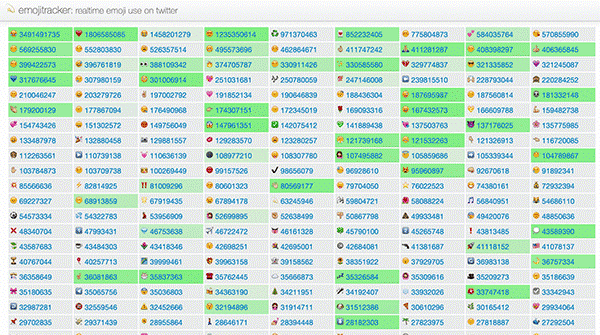
Yup it is … crying laughing face. Not too much of a surprise, but is that your go-to emoji as well? If not, do you see your favorite here?
|
|
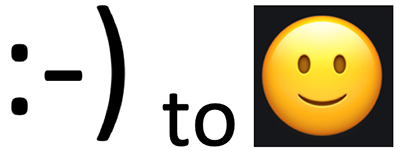
The evolution of emojis is quite fascinating. From a face that was created using a colon, a hyphen and a close parenthesis to a colorful and warm smiley face. The advances have been nothing short of amazing. As a high school classroom teacher, I am always watching out for engaging ways to get students connected to what we are learning in the classroom. I decided to use our affinity for using emojis to introduce programing in Python to my Intro to STEAM class that I teach at Comsewogue High School in Port Jefferson Station, New York. I wanted to take a less formal (and more fun) approach to coding with my students. Yes, we could have started with the traditional “Hello, world!” and the kids would be able to create some programs, but I wanted them to be able to create and see what they were coding visually. Since our class is “STEAM,” the A for art(s), what better way to do that than creating emojis on the TI-Nspire™ CX II graphing calculators using Python. (Are you or your students new to Python? No problem! Check out the TI Codes with Python website to learn the basics.)
The first emoji project
After taking the students through a quick tutorial on how to make a basic happy face, they were let loose on a task to create their own emoji. Their excitement was immediate, and with each passing minute they were making changes, looking up different RBG color values and, as soon as they pressed “control r” to run their code, they would quickly (and proudly) turn their calculator to their friends to share what they just created. This project allowed for student choice and creativity, and they were not afraid to make mistakes and worked tirelessly (can you say debugging code?) to correct them. Just look at some of the creative ones they came up with:
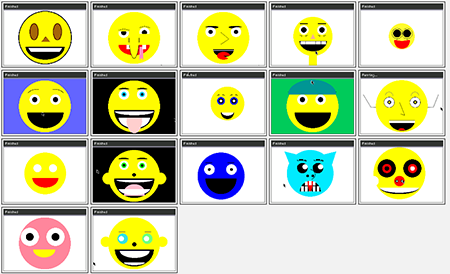
There were a few students who surprised me — they went above and beyond and added animation to their emoji (we had done some moving of objects on the screen using some For Loops prior, and they were able to assimilate that with this project). (My ❮3 was happy!)
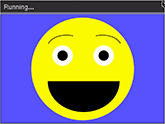
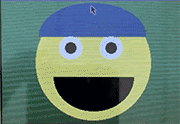
Math connections? Yes!
We have since revisited this emoji project/challenge and what the students have learned since that time is the concept of creating a function in Python. We have emphasized creating graphics as a function that they will be able to locate on the screen based upon coordinates. Some have added an additional scaling parameter to their function! It is great to hear students say, “How can we create a function for this?”
Here’s a basic program to create the happy face emoji on the TI-Nspire™ CX II graphing calculator. This can easily get your students on their way to creating their own (after a little introduction with the help of TI Codes).
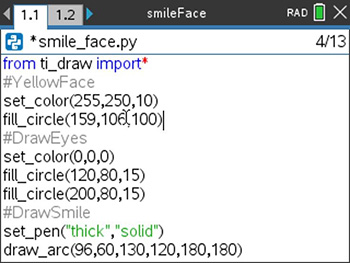
Now, let’s see that summer or back-to-school smile
Teaching a summer program at the moment? Or looking for a fun, back to school idea? Try having your students create an emoji that best expresses their summer vibe or back-to-school smile!
Regardless, creating emojis can be a creative, fun way to get students coding, and even sneak some math in too. I’d call that a win-win.
Happy World Emoji Day!
About the author: Brad Posnanski (@POSitive_MATH) teaches algebra I, precalculus, Introduction to STEM and AP® Computer Science Principles at Comsewogue High School on Long Island in New York. He has been teaching for 26 years and also coaches varsity track and field. He is a national T³™ instructor presenting regularly at Texas Instruments international conferences, several Tuesday night national TI webinars, and local state teacher conferences. He is a firm believer in the integration of technology in the teaching of mathematical concepts to make learning more fun and interesting.
AP® is a trademark registered by the College Board, which is not affiliated with, and does not endorse, TI products. Policies subject to change. Visit www.collegeboard.org.
Tags:
Tagcloud
Archive
- 2025
- 2024
- 2023
- 2022
-
2021
- January (2)
- February (3)
- March (5)
-
April (7)
- Top Tips for Tackling the SAT® with the TI-84 Plus CE
- Monday Night Calculus With Steve Kokoska and Tom Dick
- Which TI Calculator for the SAT® and Why?
- Top Tips From a Math Teacher for Taking the Online AP® Exam
- Celebrate National Robotics Week With Supervised Teardowns
- How To Use the TI-84 Plus Family of Graphing Calculators To Succeed on the ACT®
- AP® Statistics: 6 Math Functions You Must Know for the TI-84 Plus
- May (1)
- June (3)
- July (2)
- August (5)
- September (2)
-
October (4)
- Transformation Graphing — the Families of Functions Modular Video Series to the Rescue!
- Top 3 Halloween-Themed Classroom Activities
- In Honor of National Chemistry Week, 5 “Organic” Ways to Incorporate TI Technology Into Chemistry Class
- 5 Spook-tacular Ways to Bring the Halloween “Spirits” Into Your Classroom
- November (4)
- December (1)
-
2020
- January (2)
- February (1)
- March (3)
- April (1)
- May (2)
- July (1)
- August (2)
- September (3)
-
October (7)
- Tips for Teachers in the time of COVID-19
- Top 10 Features of TI-84 Plus for Taking the ACT®
- TI Codes Contest Winners Revealed
- Best of Chemistry Activities for the Fall Semester
- Best of Biology Activities for the Fall Semester
- Best of Physics Activities for the Fall Semester
- Best of Middle Grades Science Activities
- November (1)
- December (2)
- 2019
-
2018
- January (1)
- February (5)
- March (4)
- April (5)
- May (4)
- June (4)
- July (4)
- August (4)
- September (5)
-
October (9)
- Art in Chemistry
- Which Texas Instruments (TI) Calculator for the ACT® and Why?
- Meet TI Teacher of the Month: Jessica Kohout
- Innovation in Biology
- Learning With Your Students
- A first-of-its-kind STEM strategy charts path to help educators
- #NCTMregionals Hartford 2018 Recap
- The Math Behind “Going Viral”
- Real-World Applications of Chemistry
-
November (8)
- Testing Tips: Using Calculators on Class Assessments
- Girls in STEM: A Personal Perspective
- 5 Teachers You Should Be Following on Instagram Right Now
- Meet TI Teacher of the Month: Katie England
- End-of-Marking Period Feedback Is a Two-Way Street
- #NCTMregionals Kansas City 2018 Recap
- Slope: It Shouldn’t Just Be a Formula
- Hit a high note exploring the math behind music
- December (5)
- 2017
- 2016
- 2015

